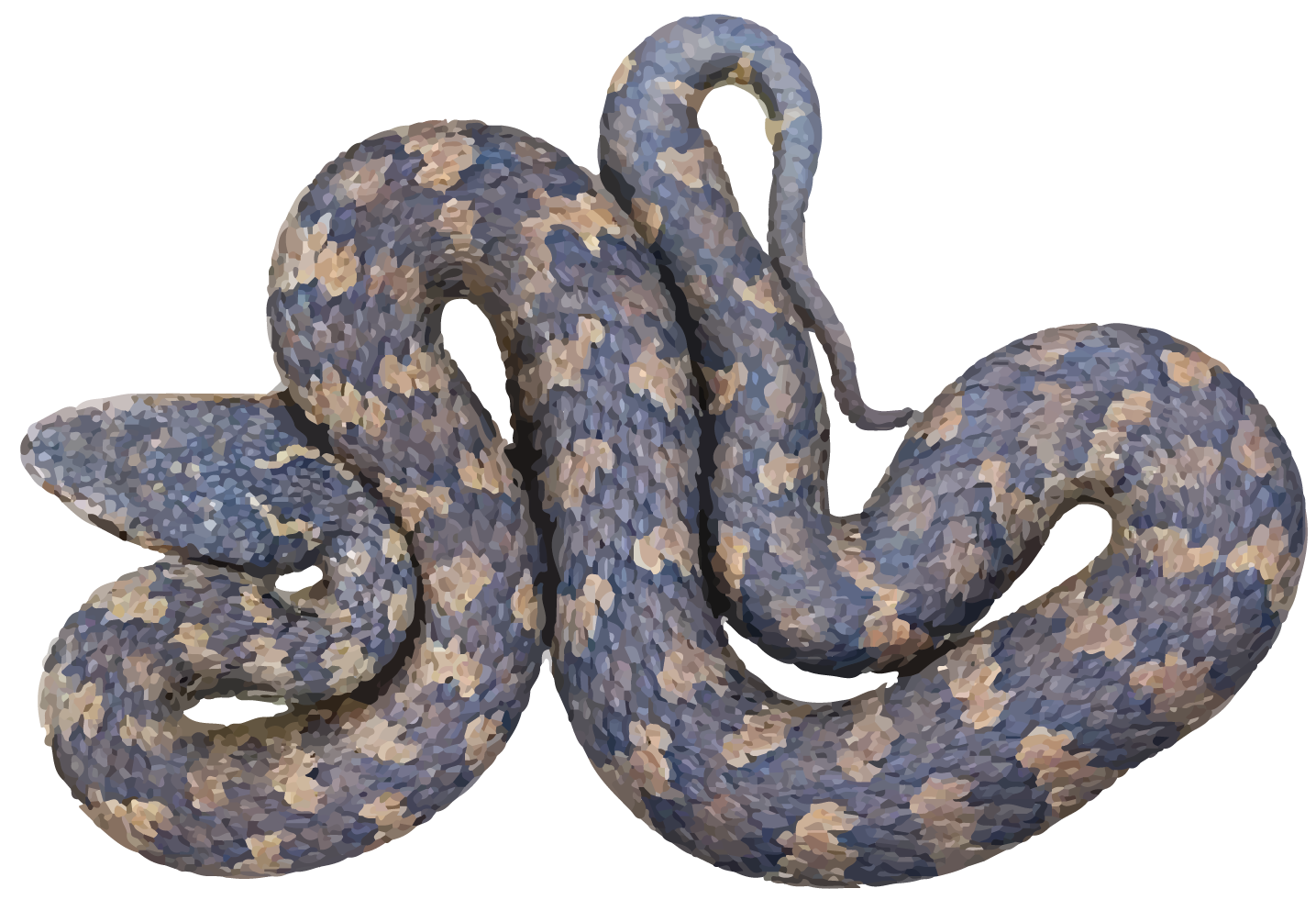Horseshoe Pit Viper

- Habitat: Forested areas, including rainforests and bamboo thickets
- Distribution: Southeast Asia, specifically found in Thailand, Malaysia, and Indonesia
- Diet: Small mammals, birds, lizards, and insects
- Size: Typically 1.5-2 feet in length
Physical Description:
- Appearance: The Horseshoe Pit Viper has a robust body with keeled scales. Its coloration varies but is generally gray, brown, or olive, with darker, horseshoe-shaped markings along its back. The head is broad and triangular, distinct from the neck, and features the characteristic heat-sensing pits of pit vipers.
- Size: Adults typically measure between 60 to 90 cm (24 to 35 inches) in length, though some individuals can grow longer.
- Tail: The tail is relatively short and tapering.
Conservation:
- Status: The conservation status of the Horseshoe Pit Viper is not well-documented, but it may face threats from habitat loss due to deforestation and human encroachment.
- Protection: Conservation efforts should focus on habitat preservation and protecting montane forests and rocky hillsides from further destruction.
Importance:
- Ecological Role: As a predator, the Horseshoe Pit Viper helps regulate populations of small vertebrates, contributing to the ecological balance in its habitat.
- Human Interaction: While its venom is potent and can cause significant pain, swelling, and tissue damage, bites to humans are rare. People should exercise caution and avoid handling or provoking these snakes.
